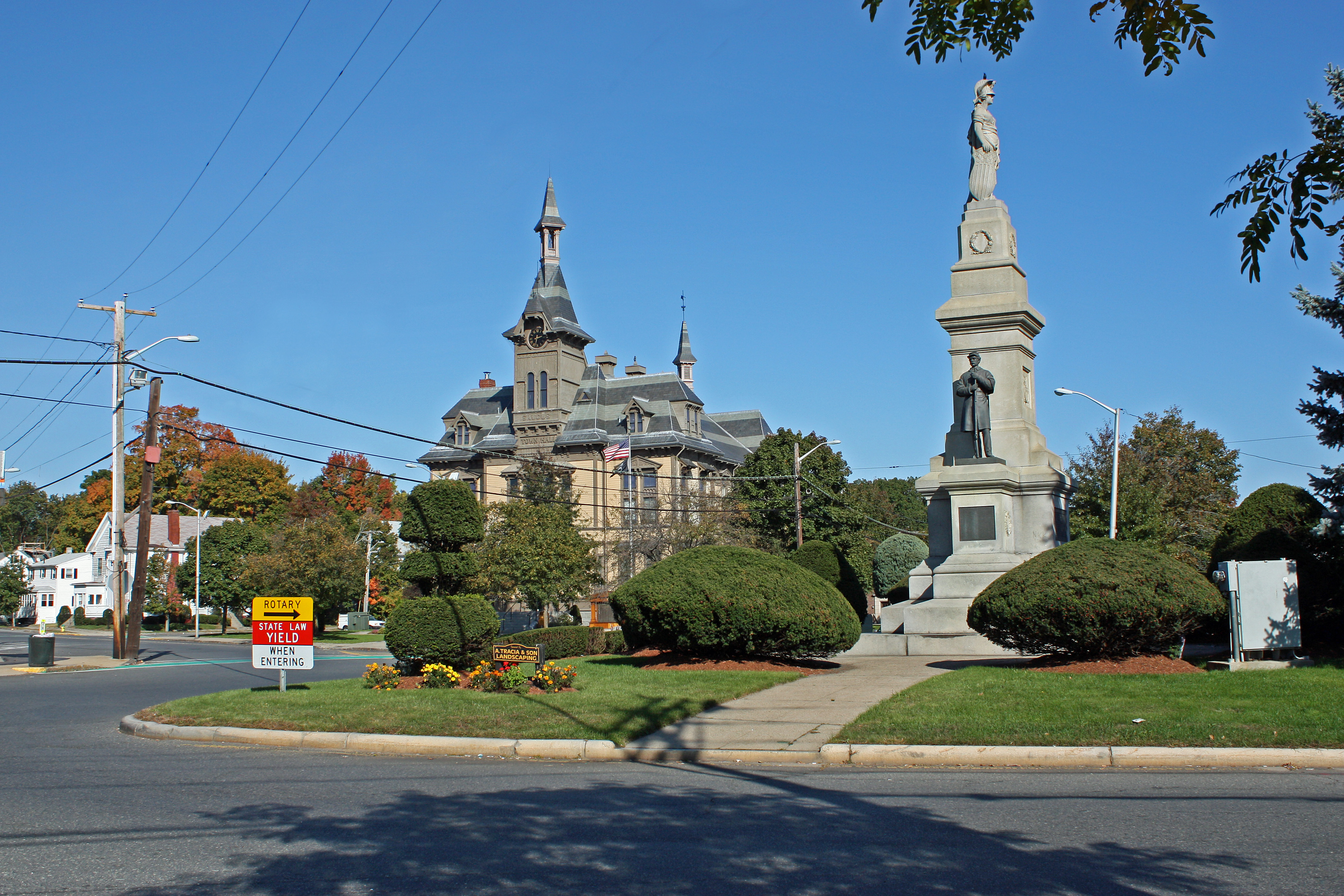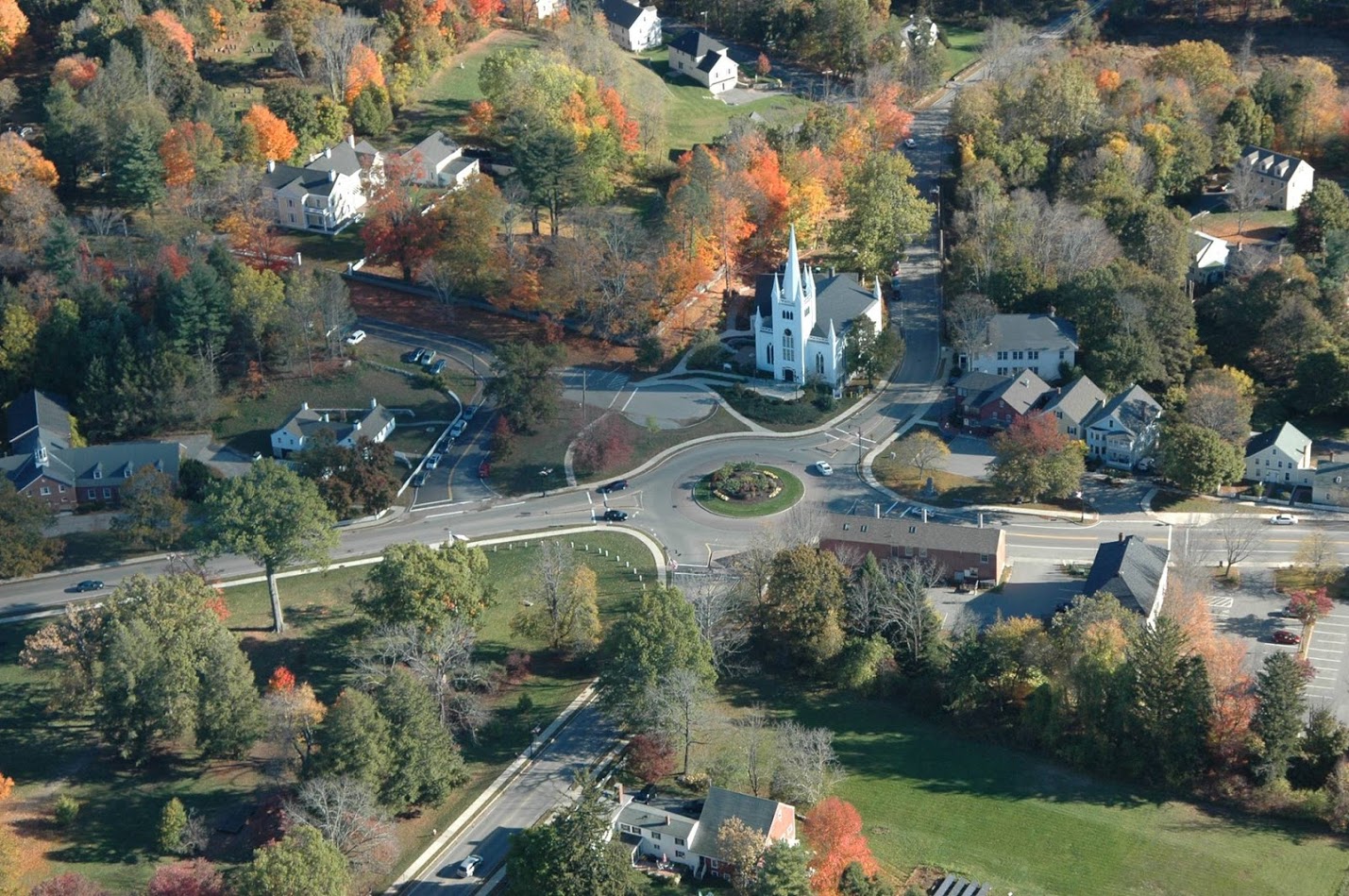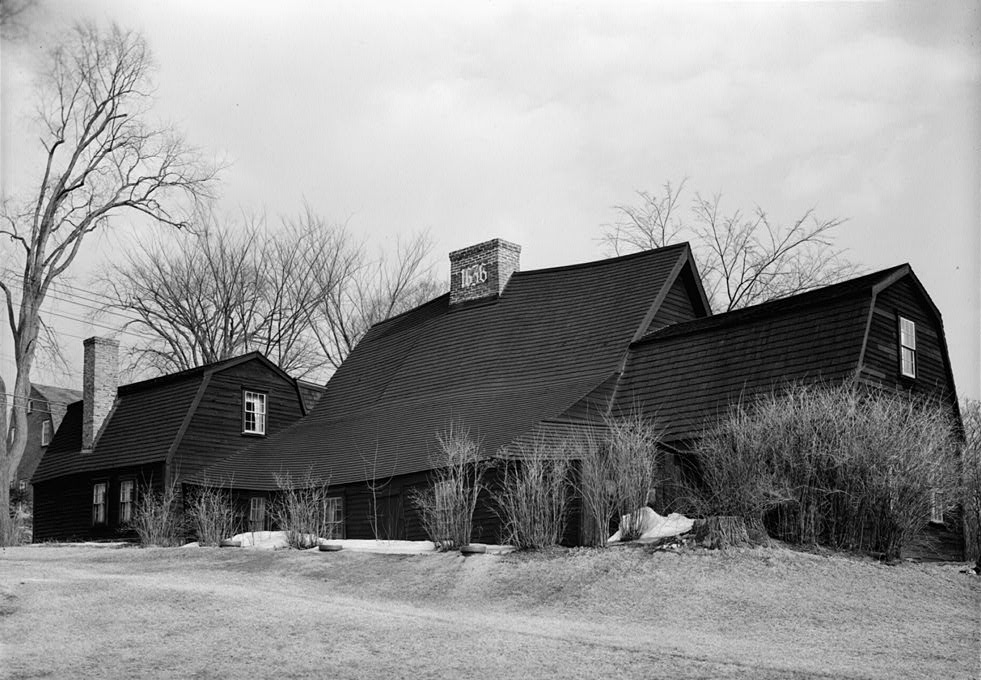|
John Boardman House
The John Boardman House is a historic First Period house in Boxford, Massachusetts. Its oldest portion dates to about 1740, but has stylistically older elements. It was moved to its current location from Saugus in 1956, before which it had undergone restoration. It was listed on the National Register of Historic Places in 1990. Description and history The John Boardman House stands in a rural residential area, on the south side of Lawrence Road, a through street connecting Boxford center to the east and North Andover to the west. It is set at a distance from the road on of land, and faces Fish Brook, a tributary of the Ipswich River. It is a -story timber-framed structure, with a side gable roof, central chimney, and clapboarded exterior. It has a four-bay front facade, with the entrance in the center-right bay. The roof on the rear of the house (facing the street) extends down to the first floor, giving the house a classic Colonial period saltbox profile. The oldest fe ... [...More Info...] [...Related Items...] OR: [Wikipedia] [Google] [Baidu] |
Boxford, Massachusetts
Boxford is a town in Essex County, Massachusetts, United States. According to the U.S. Census Bureau, the town's population was 8,203 in 2020. The original town center of Boxford, along with East Boxford and other areas in the eastern part of the town, comprise the census-designated place of Boxford. History Native Americans inhabited northeastern Massachusetts for thousands of years prior to European colonization of the Americas. At the time of contact, the area that would become Boxford was controlled by Agawam sachem Masconomet, but the Agawam would experience severe population loss from virgin soil epidemics, especially in 1617–1619, killing an estimated 50–75% of the indigenous population in the region. Although Boxford was settled by Europeans in 1646, it was not until 1700 that the selectmen of Boxford would pay Masconomet's grandson Samuel English nine pounds for the rights to the town land. Europeans first settled in Boxford in 1646 as a part of Rowley Village ... [...More Info...] [...Related Items...] OR: [Wikipedia] [Google] [Baidu] |
First Period
First Period is an American architecture style in the time period between approximately 1626 and 1725, used by British colonists during the earliest English settlements in United States, particularly in Massachusetts and Virginia and later in other British colonies along the east coast. Among these cities, Essex County in Massachusetts has the highest amount of preserved First Period architecture mimicking British architecture styles. Typical features *South-facing *Central chimney *Asymmetrical rooftop *Small diamond shaped casement windows *Façade-gabled Cold weather in winter of 1630 caused mass mortality of colonists. To adapt better with geographical conditions, First Period houses are built facing south to optimize sunlight and heat up the whole house. Moreover, First Period houses are often constructed with a central chimney, distinctive style in that era, this is because it needs to maintain enough space for fireplaces and secure sufficient air is led to the stove ... [...More Info...] [...Related Items...] OR: [Wikipedia] [Google] [Baidu] |
Saugus, Massachusetts
Saugus is a town in Essex County, Massachusetts, United States, in the Greater Boston area. The population was 28,619 at the 2020 census. Saugus is known as the site of the first integrated iron works in North America. History Native Americans inhabited the area around Saugus for thousands of years prior to the arrival of European settlers in the 1620s. At the time of European arrival, the Naumkeag, also known as Pawtucket, under the leadership of Montowampate were based near present day Saugus and controlled land extending from what is now Boston to the Merrimack River. English settlers took the name ''Sagus'' or ''Saugus'' from the Pawtucket word for "outlet," and used the term to refer to the Saugus River and the region that includes the present day cities and towns of Swampscott, Nahant, Lynn, Lynnfield, Reading, North Reading and Wakefield) which were later renamed Lin or Lynn in 1637, after King's Lynn in Norfolk, England. In 1646, the Saugus Iron Works, then called Ham ... [...More Info...] [...Related Items...] OR: [Wikipedia] [Google] [Baidu] |
National Register Of Historic Places
The National Register of Historic Places (NRHP) is the United States federal government's official list of districts, sites, buildings, structures and objects deemed worthy of preservation for their historical significance or "great artistic value". A property listed in the National Register, or located within a National Register Historic District, may qualify for tax incentives derived from the total value of expenses incurred in preserving the property. The passage of the National Historic Preservation Act (NHPA) in 1966 established the National Register and the process for adding properties to it. Of the more than one and a half million properties on the National Register, 95,000 are listed individually. The remainder are contributing resources within historic districts. For most of its history, the National Register has been administered by the National Park Service (NPS), an agency within the U.S. Department of the Interior. Its goals are to help property owners and inte ... [...More Info...] [...Related Items...] OR: [Wikipedia] [Google] [Baidu] |
North Andover, Massachusetts
North Andover is an affluent town in Essex County, Massachusetts, United States. At the 2020 census the population was 30,915. History Native Americans inhabited what is now northeastern Massachusetts for thousands of years prior to European colonization of the Americas. At the time of European arrival, Massachusett and Naumkeag people inhabited the area south of the Merrimack River and Pennacooks inhabited the area to the north. The Massachusett referred to the area that would later become North Andover as ''Cochichawick''. The lands south of the Merrimack River around Lake Cochichewick and the Shawsheen River were set aside by the Massachusetts General Court in 1634 for the purpose of creating an inland plantation. The Cochichewick Plantation, as it was called, was purchased on May 6, 1646 when Reverend John Woodbridge, who had settled the land for the English, paid Massachusett sachem Cutshamekin six pounds and a coat for the lands. The plantation was then incorporated as ... [...More Info...] [...Related Items...] OR: [Wikipedia] [Google] [Baidu] |
Ipswich River
Ipswich River is a small river in northeastern Massachusetts, United States. It held significant importance in early colonial migrations inland from the ocean port of Ipswich. The river provided safe harborage at offshore Plum Island Sound to early Massachusetts subsistence farmers, who were also fishermen. A part of the river forms town boundaries and divides Essex County, Massachusetts on the coast from the more inland Middlesex County. It is long, and its watershed is approximately , with an estimated population in the area of 160,000 people. Historically, the settlement of Essex County began at the oldest community there, the tiny seaport of Agawam (later renamed Ipswich), and typically proceeded westward and northward along the Ipswich or its tributary creeks. When Middlesex County was formed in the Massachusetts Bay Colony, only Salem and Charlestown across the Charles River mouth and Boston harbor's inner estuary from Boston's much smaller hill dominated peninsula ... [...More Info...] [...Related Items...] OR: [Wikipedia] [Google] [Baidu] |
Saltbox House
A saltbox house is a gable-roofed residential structure that is typically two stories in the front and one in the rear. It is a traditional New England style of home, originally timber framed, which takes its name from its resemblance to a wooden lidded box in which salt was once kept. The structure's unequal sides and long, low rear roofline are its most distinctive features. A flat front and central chimney are also recognizable traits. Origins The saltbox originated in New England and is an example of American colonial architecture. Its shape evolved organically as an economical way to enlarge a house by adding a shed to a home's rear. Original hand-riven oak clapboards are still in place on some of the earliest New England saltboxes, such as the Comfort Starr House and Ephraim Hawley House. Once part of their exteriors, they are preserved in place in attics that were created when shed-roofed additions were added onto the homes. The style was popular for structures throug ... [...More Info...] [...Related Items...] OR: [Wikipedia] [Google] [Baidu] |
Boardman House (Saugus, Massachusetts)
The Boardman House, also known as the Scotch-Boardman House or the Bennett-Boardman House, is a historic house located at 17 Howard Street, Saugus, Massachusetts. Built in 1692, it was designated a National Historic Landmark in 1961 because of the remarkable amount of original building material still present in the house. It has been owned by Historic New England since 1914, and is open to the public on select weekends between June and October. Description and history The property was purchased by William Boardman, with a different house standing on it, in 1686. Although this house was long thought to have been built not long after this purchase, dendrochronology research on its beams confirms a later construction date of 1692. The house as first built had two rooms per floor, with a central chimney. On the ground floor it has a parlor and hall, with two bedrooms above, and an attic above the bedrooms. By 1696 a characteristic lean-to was added at the rear for the kitchen ... [...More Info...] [...Related Items...] OR: [Wikipedia] [Google] [Baidu] |
National Historic Landmark
A National Historic Landmark (NHL) is a building, district, object, site, or structure that is officially recognized by the United States government for its outstanding historical significance. Only some 2,500 (~3%) of over 90,000 places listed on the country's National Register of Historic Places are recognized as National Historic Landmarks. A National Historic Landmark District may include contributing properties that are buildings, structures, sites or objects, and it may include non-contributing properties. Contributing properties may or may not also be separately listed. Creation of the program Prior to 1935, efforts to preserve cultural heritage of national importance were made by piecemeal efforts of the United States Congress. In 1935, Congress passed the Historic Sites Act, which authorized the Interior Secretary authority to formally record and organize historic properties, and to designate properties as having "national historical significance", and gave the Nation ... [...More Info...] [...Related Items...] OR: [Wikipedia] [Google] [Baidu] |
Abbott Lowell Cummings
Abbott Lowell Cummings (March 14, 1923 – May 29, 2017) was a noted architectural historian and genealogist, best known for his study of New England architecture. Life and career Cummings was born in St. Albans, Vermont, educated at the Hoosac School in New York, studied American art and architectural history at Oberlin College, and received his doctoral degree from Ohio State University in 1950. When young, he spent winters with his parents in Bennington, Vermont, and summers with his grandmother in Southington, Connecticut. In an interview with Laura Beech, Cummings reflected on his grandmother's influence: "At a personal level, my grandmother had as much influence as anyone on my life. She was a scientist by training, a Vassar graduate who had studied astronomy. She drilled into me the need to be very factual. I also fell right in with all her genealogical interests." In his teens, Cummings joined the Society for the Preservation of New England Antiquities (SPNEA, now kno ... [...More Info...] [...Related Items...] OR: [Wikipedia] [Google] [Baidu] |
National Register Of Historic Places Listings In Essex County, Massachusetts
This list is of that portion of the National Register of Historic Places (NRHP) designated in Essex County, Massachusetts. The locations of these properties and districts for which the latitude and longitude coordinates are included below, may be seen in a map. There are more than 450 designated properties in the county, including 26 that are further designated as National Historic Landmarks. The municipalities of Andover, Gloucester, Ipswich, Lawrence, Lynn, Methuen, and Salem are to be found on a separate list(s) of the more than 200 identified here, except two properties are split between Methuen and Lawrence, and one between Lynn and Nahant; these entries appear on more than one list. __NOTOC__ Cities and towns listed separately Due to the number of listings in the county, some cities and towns have their sites listed separately. Current listings in other cities and towns ... [...More Info...] [...Related Items...] OR: [Wikipedia] [Google] [Baidu] |
List Of The Oldest Buildings In Massachusetts
This article lists the oldest buildings in the Commonwealth of Massachusetts in the United States of America, including the oldest houses in Massachusetts and any other surviving structures. Some dates are approximate (indicated with a "") and based on architectural studies and historical records, while other dates are based on dendrochronology. All entries should include citation with reference to: 17th century architectural features; a report by an architectural historian; or dendrochronology. Sites on the list are generally from the First Period of American architecture. Only First Period houses built prior to 1728 are suitable for inclusion on this list or the building must be the oldest of its type. The Fairbanks House (built 1641) is the oldest house verified using dendrochronology, followed by the James Blake House (built in 1661), but most First Period structures in Massachusetts have not yet been tested with dendrochronology surveys. Verified through survey The foll ... [...More Info...] [...Related Items...] OR: [Wikipedia] [Google] [Baidu] |





.jpg)
.jpg)

